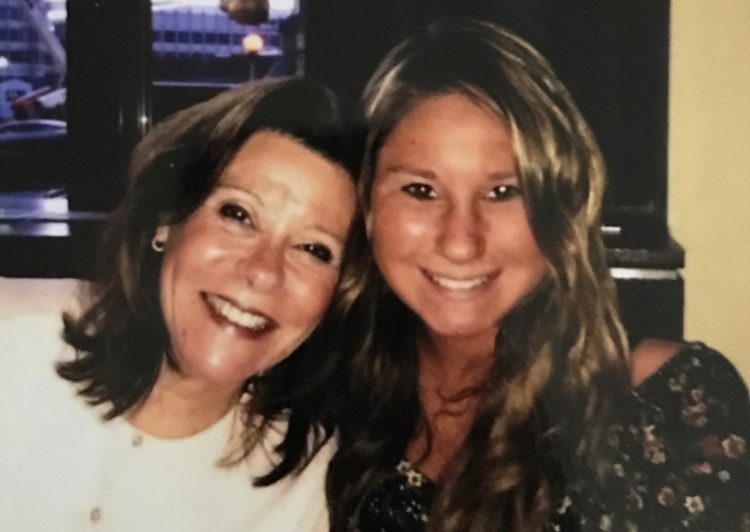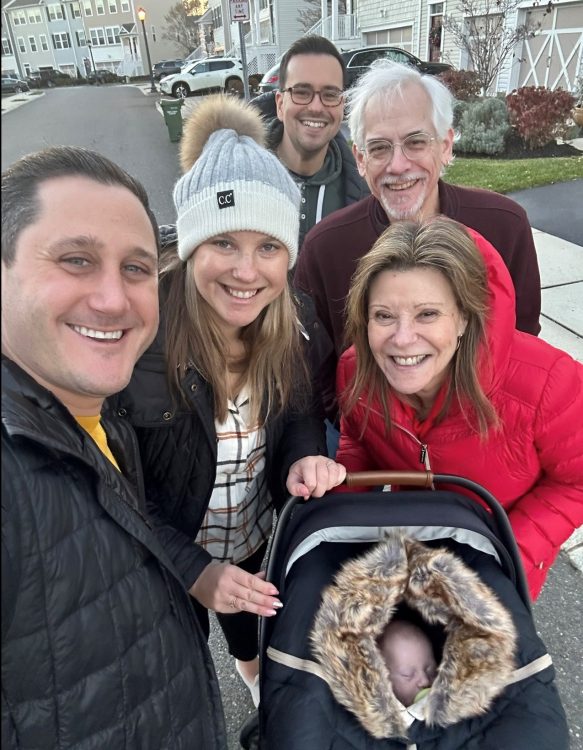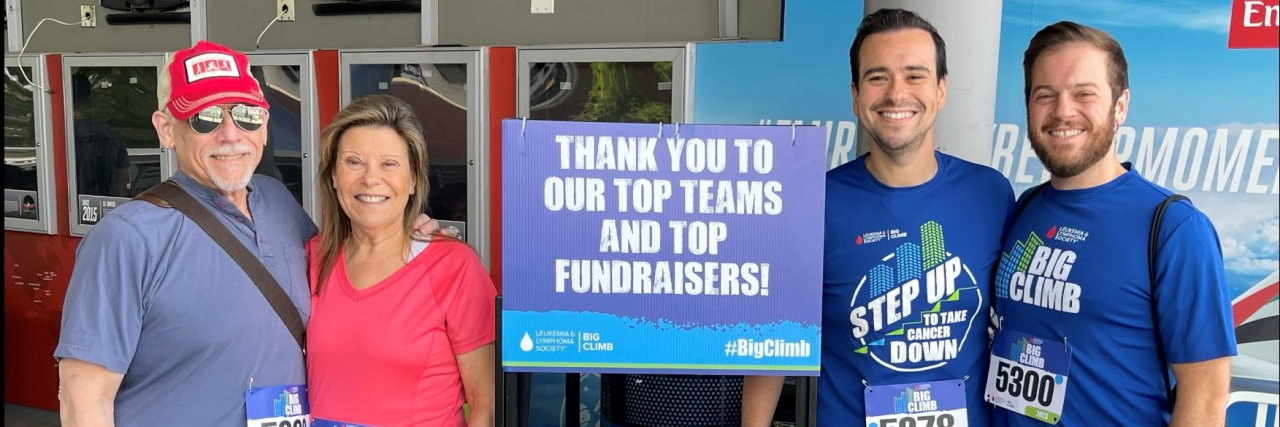My journey to a diagnosis of chronic lymphocytic leukemia (CLL) started with a routine blood test in October 2018.
Before that time, I was in excellent health. I led an active lifestyle filled with cardio, Zumba, Pilates, and a healthy diet; so when my bloodwork showed a slightly elevated white blood cell count, I didn’t think much of it. While my health care provider attributed the numbers to a medication I was taking, she recommended a follow-up blood test, just in case.
At the same time, my own health was the least of my priorities. My daughter, who was in her mid-20s, was very sick and my main concern was her wellness and care, not my own. As you can imagine, the bloodwork went to the back of my mind.

Several months later, in March 2019, my daughter passed away. I felt unmoored and needed time to process and grieve this unimaginable loss. Her death reminded me of how intensely precious life is. Finally, six months from my initial test, I scheduled the follow-up bloodwork.
When my primary care physician called with my results, I knew something wasn’t right. She told me she believed I had chronic lymphocytic leukemia (CLL), a rare blood cancer that occurs when the body produces too many lymphocytes. Compounding the stress of my diagnosis, further tests also led to the discovery of genetic markers that made my disease higher risk, including the 17p deletion and TP53 mutation.
Coming to terms with the news was not easy. Not wanting to add to my children’s grief after their sister’s recent death, it took time for me to open up to my family.
I had never heard of CLL, and I had never been seriously ill. Getting the diagnosis during an already challenging period amplified my grief and anxiety, and the internet did not provide any sort of comfort. I was terrified to learn that many reputable sites offered outdated survival data that compounded my worst fears. The only person outside of my medical team that knew about my diagnosis was my beloved partner, who accompanied me on all my initial doctor visits. I couldn’t bear sharing the diagnosis with my children, as we were already going through such a painful and horrific time.
After the initial diagnosis, my esteemed New York City CLL specialist recommended immediate treatment, believing early intervention was preferable to the “wait and watch” approach. Knowing the type of CLL I had and my high-risk genetic markers, which can make the disease more challenging to treat, was a critical part of the treatment decision-making. But I was reluctant to start treatment right away; I felt healthy, with no visible symptoms and no immediate decline in my blood markers. With that, I decided to seek a second opinion from another CLL specialist in Boston.
This divergence in medical opinions underscored the complexity and individuality of cancer treatment decisions. I was grateful my doctors were supportive in letting me take control of my treatment journey, because waiting to begin treatment was a personal decision that I was set on making.
Some time later, I began experiencing symptoms such as enlarged lymph nodes on parts of my body, enlarged spleen, and blood tests showing I had developed anemia and other indications that my CLL was progressing.
After careful consideration, concern about my genetic high-risk factors, and continuous discussions with my doctors about what might be the most effective treatment for me, I agreed to start treatment with BRUKINSA® (zanubrutinib) in June 2022. BRUKINSA® is a type of targeted treatment known as a BTK inhibitor because it works to shut down a protein within cancerous B cells called Bruton’s tyrosine kinase (BTK). Shutting down the BTK protein is important because this protein sends nonstop signals to cancerous B cells, such as those that cause CLL, to grow and spread. BRUKINSA® has been shown to be a highly effective treatment for CLL patients, including those with high-risk markers like mine.
Although everyone’s experience is different, my response to treatment was positive, with my blood levels normalizing quickly, a testament to the advancements in CLL treatments.
Taking BRUKINSA® has been a positive experience for me in that it has helped me to maintain my lifestyle. I have experienced some side effects, like an upset stomach, which I worked with my doctor to address through changes to my dosing schedule. I’ve learned that the most common side effects of BRUKINSA® include decreased white blood cell count, decreased platelet count, upper respiratory tract infection, bleeding, and muscle, bone, or joint pain.
Looking back at the time of my initial diagnosis, it was a scary, lonely time for me. I found the Leukemia & Lymphoma Society (LLS) and registered to become a member. They sent a packet of valuable resources and I finally received the guidance I was seeking. I became actively involved with LLS in 2019, and since 2021 have served on the “Light the Night” Executive Committee, as a leukemia patient and advocate.
I also found comfort in my family. When I finally did tell them the news, they were instantly supportive, and my son has accompanied me to many appointments since then. He’s become one of my greatest supporters and has even gotten involved with LLS with me.

I can now confidently say that I am hopeful about the future. Maintaining strong connections with my CLL community and staying informed about the latest advancements in CLL research and treatments through conferences and webinars has helped me remain optimistic and empowered.
If I could go back and tell myself one thing at the beginning of my CLL journey, it would be to live with hope. Advancements in CLL research and treatments provide a strong foundation for optimism, and every CLL patient should try to have an oncologist who is also a CLL specialist as part of their treatment team. You can find these doctors at either CLLSociety.org or LLS.org. It’s important to advocate for yourself. Be proactive in your treatment journey, seek second opinions when necessary, and build a solid support system by relying on loved ones and connecting with organizations like LLS. I like to remind myself that my leukemia will not define me; I will define it.
To learn more about CLL and BRUKINSA®, visit BRUKINSA.com and see the Important Safety Information below.
+++
IMPORTANT SAFETY INFORMATION
What should I tell my healthcare provider before taking BRUKINSA®?
Before taking BRUKINSA®, tell your healthcare provider about all of your medical conditions, including if you:
- have bleeding problems.
- have had recent surgery or plan to have surgery. Your healthcare provider may stop BRUKINSA® for any planned medical, surgical, or dental procedure.
- have an infection.
- have or had heart rhythm problems.
- have high blood pressure.
- have liver problems, including a history of hepatitis B virus (HBV) infection.
- are pregnant or plan to become pregnant. BRUKINSA® can harm your unborn baby. If you are able to become pregnant, your healthcare provider may do a pregnancy test before starting treatment with BRUKINSA®.
- Females should avoid getting pregnant during treatment and for 1 week after the last dose of BRUKINSA®. You should use effective birth control (contraception) during treatment and for 1 week after the last dose of BRUKINSA®.
- Males should avoid getting female partners pregnant during treatment and for 1 week after the last dose of BRUKINSA®. You should use effective birth control (contraception) during treatment and for 1 week after the last dose of BRUKINSA®.
- are breastfeeding or plan to breastfeed. It is not known if BRUKINSA® passes into your breast milk. Do not breastfeed during treatment with BRUKINSA® and for 2 weeks after the last dose of BRUKINSA®.
Tell your healthcare provider about all the medicines you take, including prescription and over-the-counter medicines, vitamins, and herbal supplements. Taking BRUKINSA® with certain other medications may affect how BRUKINSA® works and can cause side effects.
What are the possible side effects of BRUKINSA®?
BRUKINSA® may cause serious side effects, including:
- Bleeding problems (hemorrhage). Bleeding problems are common with BRUKINSA®, and can be serious and may lead to death. Your risk of bleeding may increase if you are also taking a blood thinner medicine. Tell your healthcare provider if you have any signs or symptoms of bleeding, including:
- blood in your stools or black stools (looks like tar)
- pink or brown urine
- unexpected bleeding, or bleeding that is severe or you cannot control
- vomit blood or vomit that looks like coffee grounds
- cough up blood or blood clots
- increased bruising
- dizziness
- weakness
- confusion
- change in speech
- headache that lasts a long time
-
Infections that can be serious and may lead to death. Tell your healthcare provider right away if you have fever, chills, or flu-like symptoms.
-
Decrease in blood cell counts (white blood cells, platelets, and red blood cells). Your healthcare provider should do blood tests during treatment with BRUKINSA® to check your blood counts.
-
Second primary cancers. New cancers have happened in people during treatment with BRUKINSA®, including cancers of the skin or other organs. Your healthcare provider will check you for other cancers during treatment with BRUKINSA®. Use sun protection when you are outside in sunlight.
- Heart rhythm problems (atrial fibrillation, atrial flutter, and ventricular arrhythmias) that can be serious and may lead to death. Tell your healthcare provider if you have any of the following signs or symptoms:
- your heartbeat is fast or irregular
- feel lightheaded or dizzy
- pass out (faint)
- shortness of breath
- chest discomfort
The most common side effects of BRUKINSA® include:
- decreased white blood cell count
- decreased platelet count
- upper respiratory tract infection
- Bleeding
- muscle, bone, or joint pain
These are not all the possible side effects of BRUKINSA®. Call your doctor for medical advice about side effects. You may report side effects to FDA at 1-800-FDA-1088.
What is BRUKINSA®?
BRUKINSA® is a prescription medicine used to treat adults with:
- Chronic lymphocytic leukemia (CLL) or small lymphocytic lymphoma (SLL).
- Waldenström’s macroglobulinemia (WM).
- Mantle cell lymphoma (MCL) who have received at least one prior treatment for their cancer.
- Marginal zone lymphoma (MZL) when the disease has come back or did not respond to treatment and who have received at least one certain type of treatment.
- Follicular lymphoma (FL), in combination with the medicine obinutuzumab, when the disease has come back or did not respond to treatment and who have received at least two prior treatments.
It is not known if BRUKINSA® is safe and effective in children.
Please see full Prescribing Information including Patient Information.


